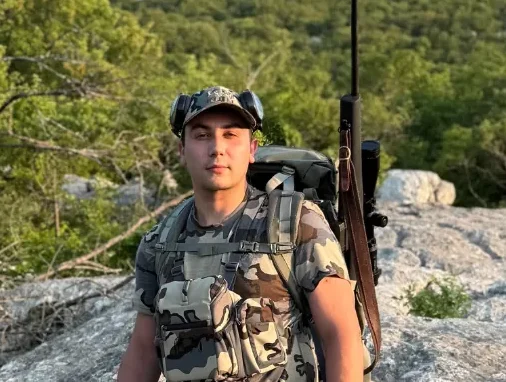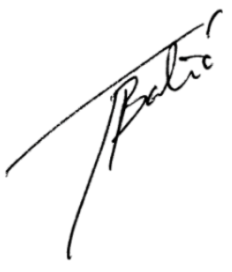The shot was perfect. The buck dropped cleanly. Your hands are still shaking from adrenaline, and now comes the moment that defines how the world sees you as a hunter: the trophy photo. Get this wrong, and you’ve just handed ammunition to every anti-hunting activist with a social media account. Get it right, and you’ve created a legacy image that honors both the animal and the tradition.
Given this blog’s focus on real hunting knowledge, this article tackles a question that makes many hunters uncomfortable: “How do I photograph my trophy without looking like a complete amateur or, worse, a disrespectful idiot?” Because let’s be brutally honest – most hunters fail spectacularly at this.
I’ve seen grown men ruin once-in-a-lifetime trophies with photos that make them look like they’ve never seen a dead deer before. Tongues hanging out, blood everywhere, hunter squatting like he’s using a camp toilet, rifle carelessly thrown on top of the animal. These photos don’t just look bad – they damage our entire community.
The harsh reality? In today’s social media world, your trophy photo represents every hunter on the planet. Non-hunters will judge our entire tradition based on your two minutes behind the camera. No pressure, right?
💡 Your trophy photo will outlive you. Make sure it represents the hunter you want to be remembered as, not the amateur you might be today.
Let me walk you through this step by step, and I’ll show you where most hunters go wrong and how to avoid looking like you learned photography from a gas station magazine.
First Things First: Show Some Damn Respect
Before you even think about pulling out your phone, stop and acknowledge what just happened. You’ve taken a life. That deserves a moment of recognition, whether you speak it aloud or keep it silent.
This isn’t hippie nonsense – it’s hunting tradition that goes back centuries. That pause sets the tone for everything that follows. Rush past this moment, and your photos will reflect that disrespect.
I’ve guided hunters who immediately start posing before the animal has even stopped moving. Don’t be that person.
Safety First (Because Common Sense Isn’t Common)
Unload your rifle and get it out of the frame or position it safely. I shouldn’t have to say this, but I’ve seen loaded rifles pointed at photographers more times than I care to count.
Confirm the animal is actually dead. Check for eye reflexes, breathing, any signs of life. Moving a wounded animal for photos is dangerous and unethical.
Don’t drag the deer by its antlers. Those antlers you’re so proud of can break, and dragging shows zero respect for the animal. Lift by the legs or neck base.
The Right Side Rule (And When to Break It)
Traditional European hunting etiquette dictates the animal should be laid on its right side. This presents the trophy cleanly and provides space for the ceremonial “last bite” sprig.
But rules have exceptions. If the exit wound or heavy blood damage is on the right side, flip it. Showing gore in your photo makes you look like you’re celebrating violence rather than a clean harvest.
Most hunters follow rules blindly without understanding the purpose behind them. The purpose is dignified presentation – adjust accordingly.
Clean Up Your Act (Literally)
Here’s where I see the most inexcusable failures: hunters who photograph bloody messes and wonder why people think we’re savages.
Wipe visible blood from the mouth, nose, and wound areas. Use a cloth, your hunting gloves, whatever it takes.
Get that tongue back in the mouth. Nothing screams “amateur hour” like a lolling tongue in your trophy photo. Use a stick, wear gloves, I don’t care – just handle it.
Brush debris off the head and antlers. Mud, leaves, and blood clots aren’t “authentic” – they’re sloppy.
Arrange the legs naturally. Front legs folded, rear legs tucked or extended neatly. The animal should look peaceful, not like it was hit by a truck.
The Last Bite Tradition (Do It Right or Don’t Do It)
The “last bite” sprig placed in the animal’s mouth symbolizes its final meal, offered by the hunter as a sign of respect. This isn’t Instagram decoration – it’s hunting tradition with real meaning.
Use local, natural vegetation. Conifer, oak, whatever grows where you’re hunting. Fake plants or flowers make you look like a fool.
A second sprig goes over the wound site. Some traditions include the guide touching the wound with a sprig and presenting the blooded sprig to the hunter for their hat.
Don’t know the tradition? Ask someone who does or skip it entirely. Half-assed tradition is worse than no tradition.
Kneeling vs. Squatting: The Difference Between Class and Trash
Kneel behind the buck’s shoulder or slightly to the side. Both knees down or one knee down – both are acceptable.
Keep your posture upright with hands lightly on the antlers. Don’t squeeze, twist, or use the antlers as armrests.
Never, ever squat like you’re using an outhouse. Deep squatting looks awkward, undignified, and screams “I don’t know what I’m doing.”
Absolutely never sit on, straddle, or put your boot on the animal. This isn’t a motorcycle – it’s a life you’ve taken. Act accordingly.
Keep Your Gear Off the Game
Do not use the animal as a gun rest, backpack stand, or beer cooler. This looks careless and disrespectful, and it photographs terribly.
If you want your rifle in the shot, lay it flat on the ground parallel to the animal. Keep it clean, safe, and secondary to the trophy. The animal is the star, not your gear.
I’ve seen hunters prop rifles against antlers like they’re decorating a Christmas tree. Don’t be that guy.
Location Matters More Than You Think
Photograph where the animal fell or as close as practical. Natural ground cover tells the story of the hunt better than your truck bed or concrete driveway.
Face the animal toward available light. Morning and evening light are ideal – harsh midday sun creates unflattering shadows.
Clear distracting branches from in front of the head, but keep enough vegetation to show habitat. The setting should tell the story of where and how this hunt happened.
Photography Basics for Hunters Who Can’t Shoot (Cameras)
Shoot from the animal’s head height – this makes antlers appear taller and more impressive. High angle shots make everything look smaller and less impressive.
Take both landscape and portrait orientations. You’ll need different formats for different uses.
Keep the horizon line straight. Crooked photos look amateurish.
Take multiple shots: Close-up antlers, full body, hunter with trophy, detail of the last bite sprig. You can’t go back and reshoot this moment.
Use your phone’s flash or find a reflector if the face is in shadow. Dark, shadowy photos hide the very details you want to showcase.
Group Photos: Don’t Forget the Team
If you hunted with a guide, dog handler, or gamekeeper, include them in at least one frame. These people made your success possible – acknowledge that.
Space everyone so the animal remains the focal point. This is about the trophy and the hunt, not a family reunion.
Social Media Reality Check
When you post these photos, you represent every hunter on the planet. Non-hunters will judge our entire community based on your image.
Add context in your caption: Species, region, fair-chase methods, management importance. Educate, don’t just show off.
Lead with your best, most respectful photo. Save the blood-and-guts shots for your hunting buddies who understand the context.
Mention selective harvest goals or management benefits. Help non-hunters understand that hunting serves conservation purposes.
Your Two-Minute Legacy
Here’s the brutal truth: you’ll spend months planning the hunt, thousands on gear and travel, days in the field, but most hunters invest less than two minutes in creating the image that will represent that entire experience.
A properly executed trophy photo honors the animal, celebrates the hunt, and upholds our traditions. It shows the world that hunters are thoughtful, respectful people who understand the weight of taking a life.
A sloppy photo suggests the opposite – that we’re careless with life, disrespectful of animals, and clueless about tradition.
Which hunter do you want to be?
For those wondering about the best way to preserve that trophy long-term, check out our Euro mount preparation guide.
The Choice Is Yours
Every trophy photo is a choice. You can spend two extra minutes doing it right, or you can hand anti-hunters a propaganda poster that makes us all look bad.
You can honor the animal and the tradition, or you can rush through like it doesn’t matter.
You can create an image you’ll be proud to show your grandchildren, or you can create one you’ll hope they never see.
The deer is dead. The hunt is over. But your responsibility as a hunter – and as a representative of our community – is just beginning.
Make it count.
Good hunting.


